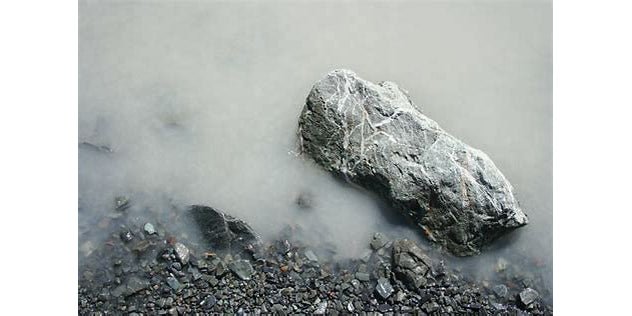Glacial till, often referred to as rock flour or glacial flour, is a fascinating sedimentary substance produced by the dynamic and powerful movement of glaciers. Formed through the relentless grinding action of immense ice bodies, this substance consists of finely ground rock particles. The journey of understanding this remarkable geological phenomenon begins with a closer look at its appearance, properties, and locations where it can be found. If you suspect you have a problem with glacial till you most likely are getting your water from a private well.
Understanding the Appearance of Glacial Till
Glacial flour, as it is often called, is usually gray or light brown in color, presenting a very fine texture that can be hard to distinguish. It can be detected in water through a simple yet effective method.
How to Detect Glacial Till in WaterFill a transparent glass with water and look through it against a source of bright light. When glacial till is scarce in the water, the light will appear to bend, giving the illusion of movement without any visible particles. In contrast, when glacial till is present in high concentration, you may find the water completely obscured, and the suspended particles might look like boiling clouds.
Unique Characteristics of Glacial Till ParticlesGlacial till particles exhibit certain unique traits. These particles are sub-micron in size and share the same electrical charge, causing them to repel one another much like how magnets behave.
Their minuscule size and lightweight nature prevent them from settling at the bottom of the glass. An overnight experiment of leaving the glass undisturbed on the counter will reveal that the particles of glacial till continue to float.
Removing Glacial Till from Water: Challenges and Solutions
Given the micro-size of glacial till particles, removing them from water can be quite challenging.
Why Typical Filters Fail?Conventional water filters fail to remove glacial till since they cannot filter particles as small as 0.02 micron.
Effective Removal TechniqueAn ultra-filtration membrane system, designed to filter down to 0.02 micron, is one of the most efficient methods to separate and remove these fine particles in residential applications.
Where to Find Glacial Till? A Geographical Insight
Glacial till is a common phenomenon in regions with a history of glaciation. This includes areas in close proximity to existing glaciers or those that have been shaped by glacial valleys.
Some of the most common places to find glacial till include high mountain ranges like the Alps, the Himalayas, and certain parts of North America such as the Pacific Northwest. These regions, shaped by historical and ongoing glacial activity, serve as rich repositories of this fascinating sediment.
Conclusion: The Mystique of Glacial Till
Glacial till, with its intriguing characteristics, presents a captivating subject of study whether it's the unique way the particles behave or the advanced methods required to filter them, the world of glacial till offers insights into the powerful natural forces shaping our planet. Its detection, properties, and the challenges in removing it from water deepen our understanding of geology, the complex interactions within our environment and the world of water treatment.

